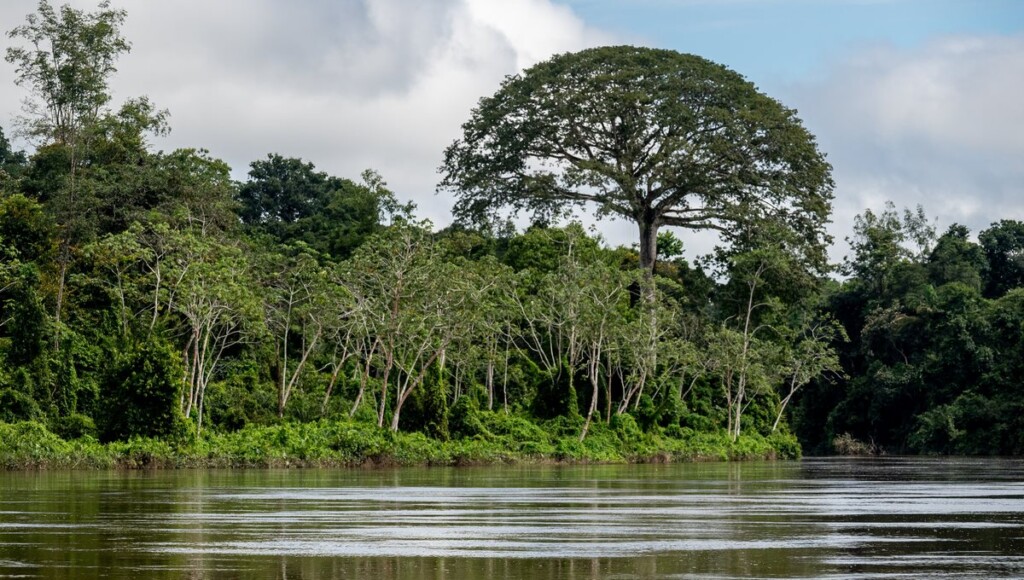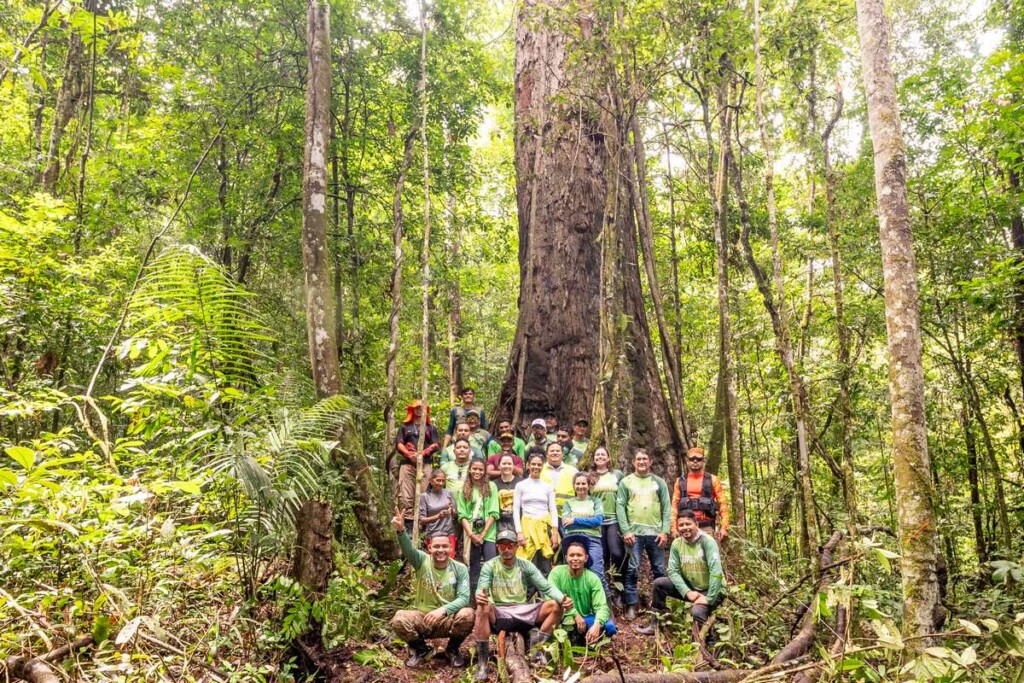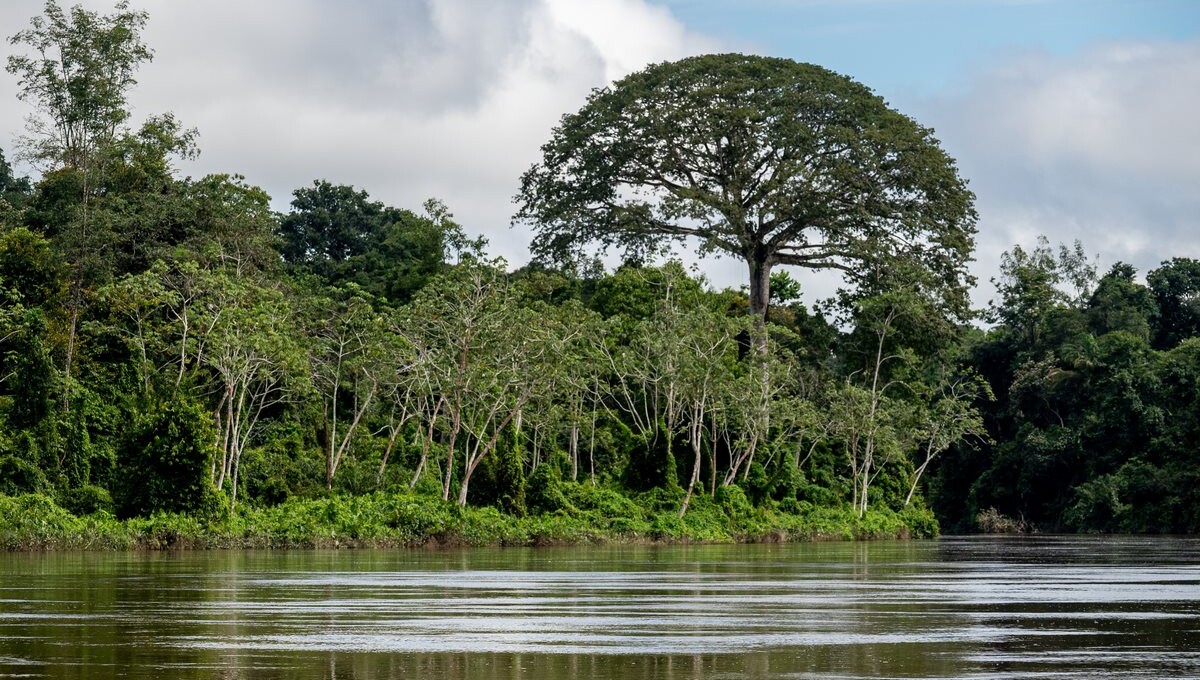
From the depths of the Brazilian Amazon comes the incredible news that a massive new protected area, guarding the tallest and most valuable trees in the great rainforest, has been established in the state of Pará.
Established by Pará’s governor Helder Barbalho on September 28th during New York Climate Week, Giant Trees of the Amazon State Park spans 1.3 million acres, as big as Yosemite and Grand Tetons National Parks put together.
Located along the Yari and Ipitinga rivers, a portion of the new park’s borders overlaps with an existing state-owned forest block, that has now been reorganized for stricter protection.
It contains over 100 individual trees from the pea family called the “Angelim Vermelho” or Dinizia excelsa. It’s considered the tallest tree in the tropical Americas at a height of 290 feet (88.5 meters). Many of those contained in the park are 400 to 600 years old, and may hold the total carbon of 500 average-sized trees.
According to the decree establishing the park, the indigenous people and their activities of gathering Brazil nuts and camu-camu shall not be interfered with, aided by a wide buffer zone around the park.
Funding for the establishment of the park was provided generously by the Amazon-Andes Fund, one of the largest conservation-focused trusts in South America, that, throughout its history, has helped establish 42 million acres of protected areas and secure 48 separate land titles for indigenous people.
“The Giant Trees State Park is very important for the protection of a unique Amazonian forest that is a marvel for the world due to the size of its trees,” said Enrique Ortiz, Andes Amazon Fund’s Senior Program Director. “It is also a critical area that provides ecosystem services which are particularly important during these times when we see extreme rains, droughts, and climatic events.”
The discovery of these tropical giants was an unlooked-for shock that came about during a randomized survey of the Amazon via satellite. Brazil’s National Institute for Space Research (Inpe) mapped 850 random 900-acre blocks of remote forest.

Eric Bastos Gorgens, a forest engineering researcher, was part of the team that parsed through the data, told Smithsonian what went on at the moment they began to find sets of numbers that indicated something out there was very, very tall.
“It could have been a bird flying by, a tower, a sensor error,” says Gorgens, who authored a recent study about the trees in the journal Frontiers in Ecology and the Environment. “So we started to look into what could have given us these numbers that were so far from standard. And as we started looking at the data more carefully, we realized they weren’t errors. They were, in fact, giant trees.”
BIG TREES FROM AROUND THE WORLD: He Found the Largest Old Growth Cedar in BC – The Tree of His Lifetime (LOOK)
Knowing they absolutely had to see these trees for themselves, a major expedition was planned up the Yari River near an area known as the Guiana Shield. It took five days to reach base camp, during which they were able to easily visit some of the trees that were growing conveniently by the riverside.
Towering above the surrounding canopy, professional photographer Fernando Sette captured stunning imagery of the trees and the lush riverine jungles surrounding them.
One of the trees measured 82 meters tall—but another would later be identified as 88.5 meters—almost 30 feet higher, and almost 300 feet in total.
MORE FOREST PROTECTIONS: Couple Plants 2 Million Trees in 20 Years to Turn Destroyed Forest Back Into a Wildlife Haven
Speaking with Smithsonian, researchers both involved and not involved with the study said the reason for the giant trees’ survival in that area isn’t totally understood. Angelim Vermelho trees can be easily pushed over in strong storms, but this eastern area of the rainforest near the Guiana Shield sees little wind and few storms compared to areas further west.
WATCH one of the researchers climb one of these giant trees…
SHARE This Wonderful Discovery And Even More Wonderful Protections…




















